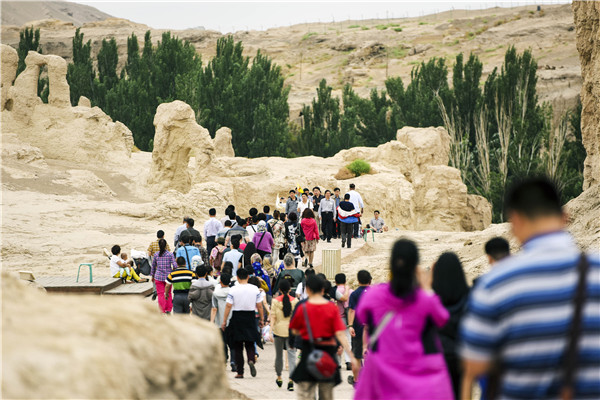 |
|
The ancient city of Yar attracts visitors from around the country. [Photo by Jiang Wenyue/China Daily] |
The bunny-a symbol of birth adopted by Christians when they co-opted the pagan equinox tribute to the fertility goddess Eostre-that day played by two nonreligious American parents, celebrated the festivals' confluence by stashing eggs (shamanic fecundity totems) in a massacred city's Buddhist cave temple.
The mythical cottontail did so when two distinct lunar calendars collided so Easter coincided with the Chinese festival hailing from ancient ancestral worship linked to folk religions, Buddhism, Taoism and Confucianism. That is, in a now predominantly Islamic swathe where Manichean and Nestorian beliefs previously prevailed.
Europeans didn't "discover" the "New World" for nearly a century after Yar was decimated. But their descendants (in this case, our family) have since zipped the other way across the planet to this westernmost strip of the Far East. And not just to hide eggs.
Thus, Turpan's ancient ghost cities of Yar and nearby Qocho are being reincarnated and repopulated by a diverse mix of sojourners.
These ancient trade hubs were vital nodes of the 5,000-kilometer Tianshan Silk Road corridor linking China with modern Kazakhstan and Kyrgyzstan. Today's Turpan is poised to become a central nexus of the embryonic new Silk Road.
Silk, lacquer ware and iron implements traveled from China to Central and West Asia, and even the Mediterranean, centuries ago.
These regions transported horses, walnuts and grapes eastward via the route.
Related Stories